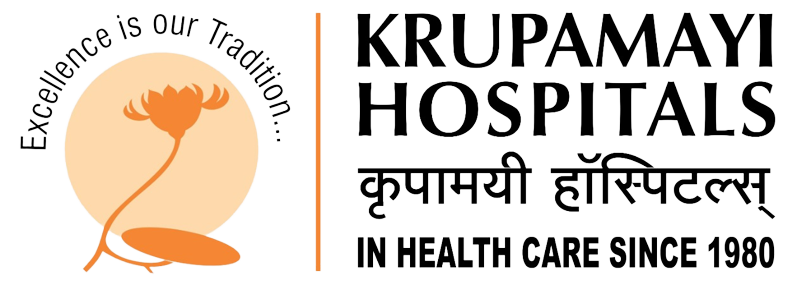Cancer is the world’s second leading cause of death, accounting for 8.8 million deaths in 2015. Breast cancer is becoming more common, with an estimated 1.5 lakh cases in 2016. So, if we can receive a thorough diagnosis and treatment for breast cancer at an early stage, we can dramatically lower the likelihood of the disease spreading.
Various life-saving breast cancer diagnosis and detection methods are now available because of developments in medical knowledge. After considering numerous aspects such as the type of breast cancer, stage, and hormone sensitivity, an oncologist selects the optimal therapy option. The treatment may be local, such as surgery or radiotherapy, or systemic, such as chemotherapy, hormone therapy, or targeted therapy, or a mix of the two.
All Above advanced breast Cancer treatments are available at Krupamayi cancer hospital. Dr. Viraj Borgaonkar is one of the best Cancer doctors in Aurangabad. He has more than 15 years of experience in Cancer Treatments. He is known as the best cancer doctor in Marathwada also. He is a director at Krupamayi Cancer Hospital in Aurangabad. Visit krupamayi hospital for breast cancer treatments.
Adjuvant chemotherapy, which is administered in a certain number of cycles over a set period of time, has contributed significantly to breast cancer progression. Many large-scale trials have demonstrated the additional benefit of combining chemotherapy and hormone therapy in sequential schedules, as well as much-focused treatments that target cancer-specific genes, proteins, or factors and reduce cancer growth and survival, but surgery remains the primary treatment option for most breast tumors.
Breast cancer treatment can have a psychological and physical impact on individuals. Breast cancer patients face the agony of disfigurement, as well as the fear of rejection from their spouses and the loss of their femininity. Breast cancer therapy has been demonstrated in studies to alter body reality and contribute to unfavorable body image assessments among breast cancer survivors. This is increased in younger women, who may have a more critical body image, and can result in symptoms such as postmastectomy despair and anxiety.
Breast-conserving therapy has transformed the treatment of breast cancer in recent decades. It consists of breast-conserving surgery such as a lumpectomy, quadrantectomy, partial mastectomy, or segmental mastectomy combined with radiotherapy and is used to treat early-stage breast cancer. This operation entails the removal of a portion of the breast containing cancer as well as some healthy tissue surrounding it. The main benefit is that a woman preserves most of her breasts and has a better quality of life in terms of body image retention and overall decreased physical morbidity. However, with big tumors, the entire breast tissue is removed (Mastectomy Surgery). Also, read our blog to learn more about Breast Cancer Surgery: To Conserve Breast or Not
As a result, breast reconstruction surgery is now available to all such breast cancer patients and survivors; it is a surgical operation that restores the size and shape of the breast following a mastectomy and is now an integral element of the treatment. Surgeons examine a patient’s medical history and overall health before recommending reconstructive alternatives based on age, health, body type, lifestyle, and aspirations. It can be done concurrently with breast cancer surgery (immediate reconstruction) or subsequently (delayed reconstruction). Tissue flap techniques, which use your own body tissues, can be used to reconstruct your breasts. To restore the breast contour, tissue from other regions of the body, such as the abdomen, thighs, or buttocks, is used.
If expanders are employed, implant reconstruction may require many sessions, increasing the number of operations and hospital visits. Tissue flap reconstruction, on the other hand, seems more natural and acts more like normal breast tissue, with studies showing a success rate of more than 90% for the microvascular flap procedure.
A modern method known as fat grafting transfers fat from one portion of the body (buttocks, thighs, or belly) to the reconstructed breast to help correct any shape irregularities. Several studies have found that breast reconstruction patients had a much higher quality of life, with higher scores in physical and emotional functioning, as well as enhanced emotions of attractiveness. This tumor surgery followed by plastic surgery to remodel the breast following tumor resection has now evolved into a specialized branch known as Oncoplastic Surgery (OPS), which integrates both of these techniques. Surgeons educate patients on the benefits and drawbacks of reconstructive treatments, allowing them to make an informed decision that restores their body image and improves their quality of life.

